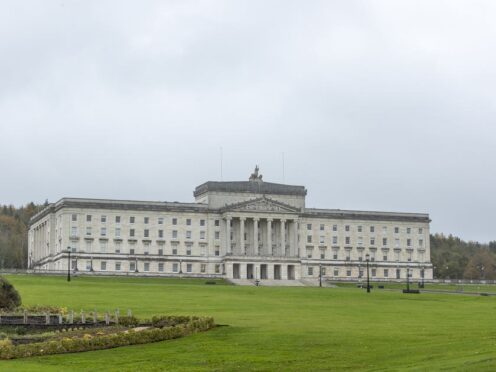
Northern Ireland’s two main parties go into the General Election on the back of starkly contrasting fortunes.
For Sinn Fein the poll represents the chance to solidify its recently assumed status as the largest party in the region, after displacing the DUP in top spot in both Assembly and local government elections over the past two years.
Michelle O’Neill became Northern Ireland’s first ever nationalist First Minister in February when devolution returned to Stormont after a two-year hiatus and the party’s vice president will be hoping to take that momentum into the July election.
If Sinn Fein enter the campaign in confident mood, there will be nervousness within the DUP hierarchy as to how unionist voters will react to its decision to drop its boycott on powersharing at Stormont, and to the recent political earthquake that saw former leader Jeffrey Donaldson quit in March after he was charged with a series of historical sexual offences – charges he denies.
The DUP had blockaded Stormont for two years in protest at post-Brexit trading arrangements that have created economic barriers between Northern Ireland and the rest of the UK.
Donaldson led the party back to Stormont earlier this year after accepting a Government deal that pledged to reduce Brexit red tape on Irish Sea trade.
While opinion polls have shown a majority of DUP supporters backed the move, a sizeable minority of members believe the deal was oversold and the party relinquished its leverage with little to show for it.
Senior party figures such as Lord Dodds and East Antrim MP Sammy Wilson have openly criticised the deal while external opponents within the wider unionist/loyalist community have been equally vocal.
One of the party’s most vociferous detractors, the Traditional Unionist Voice, may be unlikely to win any seats at the election, but it could still inflict damage if unhappy DUP voters switch allegiances in protest at the ongoing existence of the so-called Irish Sea border.
A further dynamic is provided by Reform UK’s recent electoral link-up with the TUV.
Another trend that has been marked in elections in Northern Ireland in recent years is the growth of the middle ground vote that seemingly eschews the traditional orange and green divide.
This has manifested in a surge in support enjoyed by the cross-community Alliance Party.
It will hope to defend its seat in North Down and will be eyeing potential DUP scalps in places like Lagan Valley, where the criminal case against Donaldson will undoubtedly by a factor, and in East Belfast, the constituency of the man who has succeeded Donaldson as leader, Gavin Robinson.
It was confirmed on Wednesday that Sir Jeffrey will not be seeking re-election.
The Ulster Unionist Party, the once preeminent force in Northern Ireland politics, goes into the election without any seats to defend.
Party leader Doug Beattie will hope to secure a foothold back at Westminster, with South Antrim a key constituency target.
That contest will see UUP Stormont Health Minister Robin Swann, a politician widely praised during the Covid pandemic, move from his North Antrim hinterland in a bid to unseat the DUP’s Paul Girvan.
The SDLP, whose recent electoral woes have seen it slip below the threshold for qualifying for a place in the Stormont executive, will hope to spark a long-awaited revival by holding its two Westminster seats, which are currently held by party leader Colum Eastwood and Claire Hanna.

Enjoy the convenience of having The Sunday Post delivered as a digital ePaper straight to your smartphone, tablet or computer.
Subscribe for only £5.49 a month and enjoy all the benefits of the printed paper as a digital replica.
Subscribe